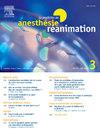Intelligence artificielle en anesthésie-réanimation : quoi de neuf en 2025 ?
Q4 Nursing
引用次数: 0
Abstract
L’essor de l’intelligence artificielle (IA) suscite de fortes attentes en anesthésie-réanimation, où l’intégration de données biomédicales complexes constitue une composante essentielle de la prise de décision. Les algorithmes d’apprentissage automatique et les approches de deep learning sont déjà déployés dans de nombreux domaines, tels que la surveillance de la profondeur anesthésique, la détection des complications périopératoires, l’assistance à l’échoguidage et l’administration automatisée d’agents anesthésiques en boucle fermée. Le présent article de mise au point propose de faire le point sur ces différents usages, d’examiner leurs limites et leurs implications cliniques, ainsi que de préciser les défis à relever pour assurer une mise en œuvre pérenne au bloc opératoire et en réanimation.
The rapid expansion of artificial intelligence (AI) is generating substantial interest in anesthesiology and critical care, where the integration of complex biomedical data is pivotal to clinical decision-making. Machine learning and deep learning algorithms are already being leveraged for various purposes, including anesthetic depth monitoring, perioperative complication detection, ultrasound-guidance assistance, and closed-loop delivery of anesthetic agents. This review provides an overview of these emerging applications, examines their limitations and clinical implications, and highlights the challenges to be overcome to ensure their sustainable integration in the operating room and intensive care settings.
人工智能在麻醉和复苏:2025年有什么新进展?
人工智能(AI)的兴起提高了麻醉和复苏领域的期望,在这个领域,复杂生物医学数据的集成是决策的一个重要组成部分。机器学习算法和深度学习方法已经应用于许多领域,如麻醉深度监测、术后并发症检测、超声引导辅助和闭环麻醉剂的自动化管理。本文概述了这些不同的用途,探讨了它们的局限性和临床影响,并确定了在手术室和复苏中持续实施的挑战。人工智能(AI)的快速扩张引起了人们对麻醉学和重症监护的极大兴趣,在这些领域,复杂生物医学数据的集成对临床决策至关重要。机器学习和深度学习算法已经被用于各种目的,包括麻醉深度监测、术后并发症检测、超声指导协助和麻醉剂的闭环输送。本综述提供了这些新兴应用的概述,审查了它们的局限性和临床影响,并强调了为确保它们在手术室和重症监护环境中可持续整合而需要克服的挑战。
本文章由计算机程序翻译,如有差异,请以英文原文为准。
求助全文
约1分钟内获得全文
求助全文
来源期刊

Praticien en Anesthesie Reanimation
Medicine-Anesthesiology and Pain Medicine
CiteScore
0.10
自引率
0.00%
发文量
61
审稿时长
51 days
期刊介绍:
Conçu et élaboré pour la formation médicale continue des anesthésistes réanimateurs, Le Praticien en anesthésie réanimation répond à des objectifs clairement définis. - Être au plus près de votre quotidien : la revue vous apporte des réponses immédiatement opérationnelles aux problèmes rencontrés dans votre exercice.
 求助内容:
求助内容: 应助结果提醒方式:
应助结果提醒方式:


